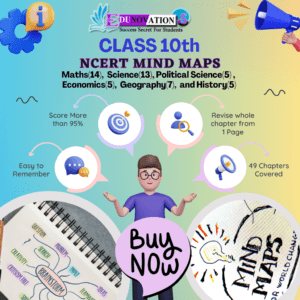Discover effective tips for implementing inclusive education in rural Indian school systems based on national policy insights and practical strategies.
Inclusive education is no longer a distant vision—it is a constitutional mandate and a societal necessity. In the vast and diverse landscape of India, where rural communities represent the majority of the population, implementing inclusive education in rural Indian school systems remains a pressing concern. A recent government report outlines a holistic framework to ensure every child, regardless of their background or ability, receives equitable and quality education.
While urban areas often benefit from resource concentration and educational interventions, rural schools struggle with deep-rooted challenges such as inadequate infrastructure, teacher shortages, social stigma, and policy implementation gaps. But solutions are emerging—and with the right roadmap, inclusive education in rural India can transition from theory to transformation.
The Ground Realities of Rural Education in India
India’s rural education sector is affected by multifaceted issues, ranging from accessibility and affordability to gender inequality and disability inclusion. According to the Unified District Information System for Education (UDISE+), over 60% of the schools in rural India lack basic amenities such as toilets, drinking water, or ramps for differently-abled students.
These realities call for actionable tips for implementing inclusive education in rural Indian school systems, tailored to local contexts and supported by data-driven governance.
Key Policy Foundations: RTE Act and NEP 2020
India’s Right to Education (RTE) Act mandates free and compulsory education for children aged 6 to 14 years. Additionally, the National Education Policy (NEP) 2020 calls for a learner-centric model that respects diversity and ensures equity through multidisciplinary and holistic education.
The General Education Council (GEC) proposed in the report seeks to uphold these values by standardizing academic practices and aligning them with regional needs.
Challenges in Implementing Inclusive Education
Despite strong legal frameworks, the execution of inclusive education faces significant obstacles:
- Teacher Preparedness: Many educators lack training in inclusive pedagogy or disability education.
- Language Barriers: Students in rural areas often speak regional dialects, while teaching is conducted in Hindi or English.
- Infrastructural Gaps: Inadequate classrooms, lack of digital tools, and poor transport hinder inclusive outreach.
- Socio-Cultural Bias: Gender discrimination, caste bias, and stigma against children with special needs limit enrollment and participation.
Strategic Tips for Effective Implementation
Addressing these barriers demands actionable and localized strategies. Below are key tips for implementing inclusive education in rural Indian school systems:
1. Community-Based Educational Planning
Engage local stakeholders—including panchayats, NGOs, and parents—to co-develop school improvement plans. This increases accountability and tailors education to cultural contexts.
2. Multilingual and Contextual Learning Materials
Learning materials must reflect local languages and realities. Using regional dialects helps improve comprehension and encourages parent-teacher engagement.
3. Professional Development for Teachers
Mandatory training in inclusive and adaptive pedagogy can empower teachers to address diverse learning needs. Government and private institutions must prioritize certification programs.
4. Inclusive Infrastructure
Implement low-cost solutions like mobile ramps, gender-segregated toilets, and solar-powered classrooms to make schools more accessible.
5. Digital Inclusion
Leverage initiatives like DIKSHA and PM eVidya to integrate AI tools for equitable teaching in Indian schools, even in low-bandwidth areas. Offline-first apps and solar-powered devices can bridge the digital divide.
(Also explore Free NCERT PDFs and NCERT Courses to support student access in rural zones.)
Toppers Use Mind Maps to score more than 95%
NCERT Class 11th Commerce Mind Maps
Add to cartOriginal price was: ₹999.00.₹199.00Current price is: ₹199.00.NCERT Class 12th Chemistry Mind Maps
Add to cartOriginal price was: ₹199.00.₹75.00Current price is: ₹75.00.NCERT Class 12th Commerce Mind Maps
Add to cartOriginal price was: ₹999.00.₹199.00Current price is: ₹199.00.NCERT Class 12th Science Mind Maps
Add to cartOriginal price was: ₹999.00.₹199.00Current price is: ₹199.00.NCERT Mind Maps For Class 10th
Add to cartOriginal price was: ₹999.00.₹199.00Current price is: ₹199.00.
Purchase Today
Policy Spotlight: Neighbourhood Schools under RTE
One of the foundational ideas in the GCE report is the development of neighbourhood schools. These are schools located within a 1–3 km radius of a child’s residence to fulfill the RTE requirement.
Parents and educators must understand how to set up neighbourhood schools under RTE free compulsory education. Key steps include:
- Conducting village-level school mapping.
- Forming school management committees (SMCs).
- Allocating government land for infrastructure.
- Partnering with NGOs for teaching support.
For expert help in launching such educational websites or management systems, visit Mart India Infotech.
Future-Proofing Rural Learning with Vocational Education
Vocational training is another pillar of the inclusive education framework. Introducing best practices for vocational education integration in K12 programs can prepare students for local employment.
Examples:
- Carpentry or agriculture training in tribal belts.
- ICT training linked to regional job markets.
- Apprenticeships with local industries.
Explore MCQs and Video Learning Modules to supplement vocational courses.
The Role of Curriculum: Multidisciplinary Learning
A standout initiative from the GCE roadmap is fostering multidisciplinary learning curriculum for secondary schools in India. Instead of siloed learning, students should engage with STEM, arts, and ethics collectively.
Implementation involves:
- Flexible subject choices.
- Blended learning methodologies.
- Continuous formative assessments.
Teachers can enhance effectiveness using Notes and Mind Maps for better retention.
Equity Through AI and EdTech
The integration of human-in-the-loop AI tools for equitable teaching in Indian schools can democratize education access. By enabling data-based customization of learning paths, AI ensures that students with varying abilities progress together.
Key EdTech strategies:
- AI-based adaptive assessments.
- Personalized content delivery.
- Real-time feedback to teachers.
Insights from Educational Leaders
Dr. Rukmini Banerji, CEO of Pratham, recently remarked, “True inclusivity in education is not about infrastructure alone, but about shifting mindsets and expectations. Rural schools must be centers of hope, not just instruction.”
Her comment underscores the need to prioritize both emotional and cognitive growth in rural education models.
Final Thoughts
Inclusive education is a journey that demands persistent effort, policy synergy, and stakeholder collaboration. These tips for implementing inclusive education in rural Indian school systems offer a practical starting point for transformation.
To deepen your understanding, stay updated with Current Affairs and align with syllabus updates to match evolving frameworks.
FAQs on Inclusive Education in Rural Indian Schools
- What are some tips for implementing inclusive education in rural Indian school systems?
Involve the community, train teachers, provide contextual learning, and improve infrastructure. - How can neighbourhood schools be established under the RTE Act?
Identify local needs, form SMCs, allocate land, and ensure regular monitoring. - What is multidisciplinary learning curriculum in India’s education system?
It allows students to study diverse subjects like science, arts, and ethics simultaneously. - How can AI tools promote equity in rural schools?
AI tools offer personalized learning and real-time feedback, supporting diverse learning needs. - Why is vocational training important in rural education?
It equips students with job-ready skills and enhances their employability in local economies. - What challenges do rural schools face in inclusive education?
Key challenges include poor infrastructure, lack of trained teachers, and social stigma. - How does NEP 2020 promote inclusive education?
It emphasizes equity, local language instruction, and flexible learning paths. - What are the best practices for vocational education integration in K12 programs?
Contextual training, apprenticeships, and alignment with local job markets are effective. - How can teachers be trained for inclusive classrooms?
Through continuous professional development and certification in special education. - Which platforms support inclusive and remote learning for rural students?
Platforms like DIKSHA, PM eVidya, and Edunovations support remote and inclusive education.














